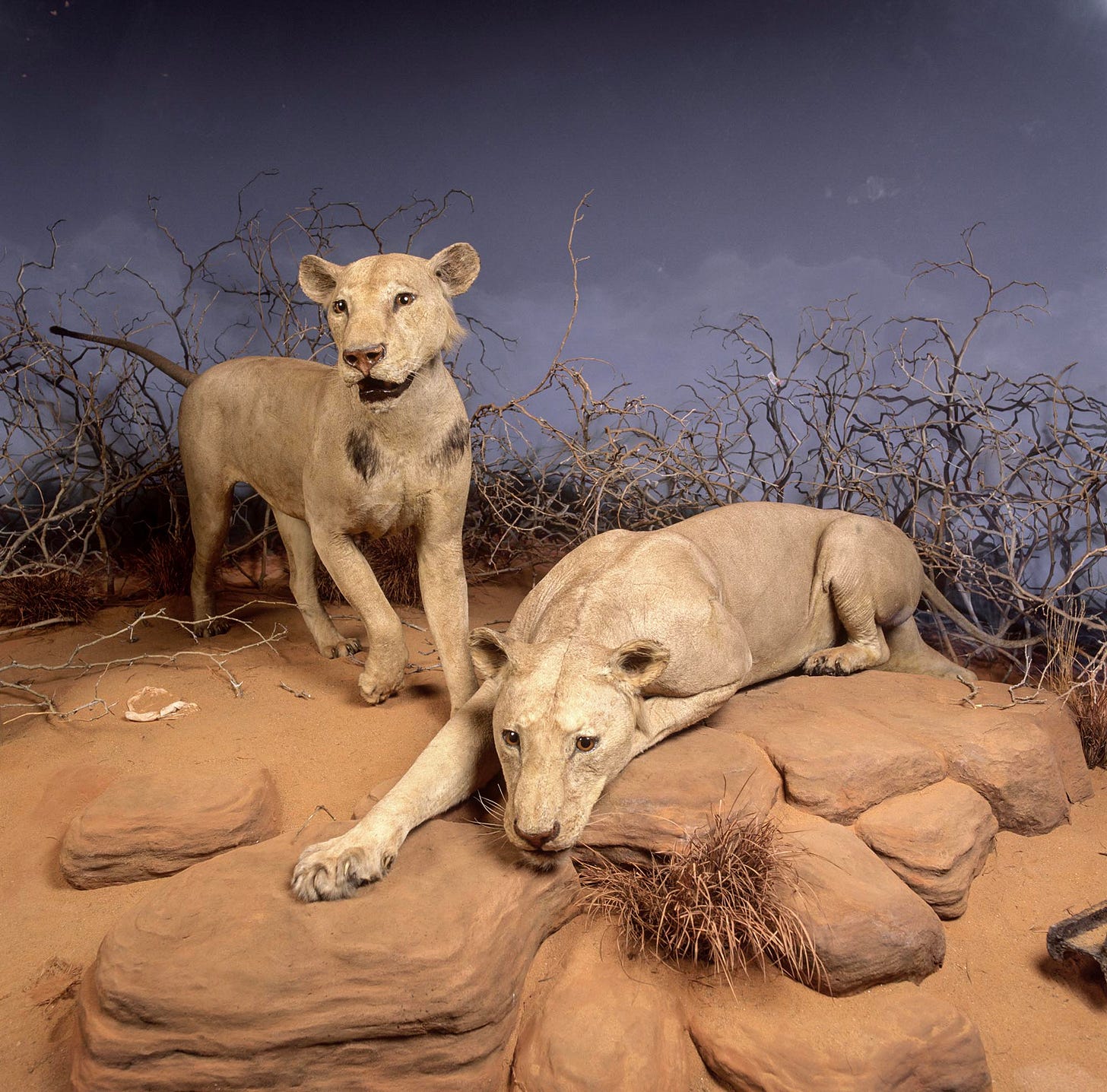Curated by Shola Lawal. Art direction by Wynona Mutisi
The Museum of Stolen History is a new series by The Continent that tells the stories of some of Africa's most significant artefacts.
British colonists were scrambling to dominate the entire Great Lakes region before the Germans. They needed to transfer soldiers, munitions, and other supplies inland. But how? Their answer: a colossal 530km railroad that would snake through the rugged wilderness and link Mombasa to Lake Victoria.
The year was 1898. So began the Uganda Railway project. It was quickly nicknamed “The Lunatic Express” because of its vast expense in both lives and money.
More than 30,000 Sikhs were shipped in from Britain’s colony in India to work on the project – thousands died from disease and sheer exhaustion. When the project got to the wild plains around the Tsavo River, a pair of enormous, maneless lions began attacking workers in their tent camps at night, seizing sleeping workers and dragging their screaming victims off into the bush. Those left behind were terrified.
It was odd: Lions attack humans out of desperate hunger or to defend themselves, but they don’t actively hunt us. Some speculate that the plentiful dead bodies of railway workers had fuelled their appetite for humans. In the camps, rumours spread they were ancient spirits furious about construction on sacred land. Camp workers named them Ghost and Darkness.
Ghost and Darkness caused nine months of nightly horror. Thick walls of whistling thorns did not stop the beasts from penetrating the camps and seizing one victim from the hospital. A local warrior dispatched to hunt them unfortunately arrived after nightfall and was attacked and killed by the pair. The death toll grew so alarming that workers threatened to flee. Construction was suspended.
With the fate of the empire hanging on his shoulders, Lieutenant Colonel John Henry Patterson, the army officer in charge, took matters into his own hands. An experienced tiger hunter, he resolved to kill the lions.
According to his own account, The Man-eaters of Tsavo – published in 1907 – the effort nearly killed him. At one point, believing he could lure the beasts with animal carcasses, the lions ignored the trap and circled his location.
He finally managed to kill one from a tree top. The second proved much tougher, and would not die despite several encounters where the animal was shot and wounded.
In their final meeting, the beast charged straight at Patterson, coming mere steps away before it collapsed from a barrage of bullets. Eight men carried each carcass back to the camps. In February 1899, the rail line was finished.
At least three movies are based on Patterson’s tale, including the 1996 thriller The Ghost and the Darkness. No one knows exactly how many workers the lions killed. Patterson’s book said “no less than 28 Indians and Africans”. In subsequent writings, he raised the number to 135 deaths, saying that African workers were not officially documented. Using hairballs stuck in the cavities of their teeth, expert analysis concluded they killed 35 humans.
In 1925, Patterson sold the lions’ skulls and skin – which he had turned into rugs – to the Chicago Field Museum of Natural History for $5,000. Specialists restored the carcasses by stuffing them and then mounted them on display.
Analysis of the pairs’ jaws helped reveal the two were brothers, and that one lion had a tooth abscess that must have been excruciatingly painful. It was likely, experts concluded, that they both hunted humans because our species is easier to hunt and chew than other animals.
In 2009, Kenya’s museum authorities began advocating for the repatriation of the remains. However, it is not clear if a formal request was ever made.
Fredrick Manthi, director of Antiquities at National Museums of Kenya, told The Continent that Kenyans want to own and showcase their history in their country. The people of Kenya and Tsavo have the right to this resource, he said.










What a bizarre incident. It almost feels like it's from a movie!